#afro cuban history
Text
Fulgencio Batista is one example among many of people with mixed heritage who did not proclaim himself Black in any way, shape, form, or fashion:
Fulgencio Batista is an example of many things. Of the kind of leaders that the United States sponsored under the quasi-annexation the Platt and Teller Amendments secured. Of the kind of person who has mixed ancestry but did not consider himself Black (his ancestors were Black, Chinese, and Taino, as well as white, respectively). His regime was a brutal corrupt thing that had limited to no popular appeal, hence the ability of a relatively weak and puny movement led by Fidel Castro to depose it.
Batista also 'recruited' Haitian laborers in the sugar industry called Braceros who are in that nebulous 'not quite slavery' concept much like US sharecroppers in the Deep South who did live on cotton plantations and worked themselves to the bone in a region whose economy was very much reliant on their labor.
3 notes
·
View notes
Text

A revolutionist to the end, who inspired those that succeeded in the end!
🐴🇨🇺🌿
#history#rosa castellanos#cuba#la bayamesa#historical figures#caribbean history#cuban revolution#military#ten years war#field hospitals#cuban history#latina#afro cuban#grl pwr#caribbean#latin america#black history#girl power#revolutionist#historical women#black excellence#strong women#women empowerment#womens history#afro latina#role model#1800s#early 1900s#nickys facts
6 notes
·
View notes
Text
Mario Bauzá: Pioneering Afro-Cuban Jazz and the Legacy of a Musical Innovator
Introduction:
Mario Bauzá, born one hundred and thirteen years ago today on April 28, 1911, in Havana, Cuba, was a pivotal figure in the development of Afro-Cuban jazz. His contributions as a musician, composer, and bandleader helped shape the sound of Latin jazz and left an indelible mark on the world of music.
Early Life and Influences:
Bauzá, raised in Havana, showed prodigious talent on…
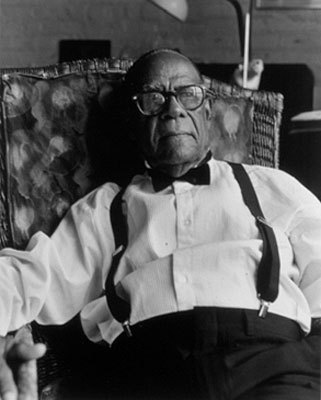
View On WordPress
#Afro-Cuban jazz#Carlos Santana#Dizzy Gillespie#Eddie Palmieri#Frankie Trumbauer#George Gershwin#Jazz Clarinetists#Jazz Composers#Jazz History#Jazz Saxophonists#Jazz Trumpeters#Machito#Machito and His Afro-Cubans orchestra#Mario Bauzá#René Endreira#The Santo Domingo Serenaders#Tito Puente
2 notes
·
View notes
Text
Juego de Maní: The Cuban Martial Art and Dance of War
Juego de Maní, the Cuban Martial Art and Dance of War, is a captivating and culturally rich form of combat that has deep roots in Cuban history. Originating from the Afro-Cuban traditions, Juego de Maní combines elements of martial arts, dance, and music into a mesmerizing and powerful art form.
At the core of Juego de Maní is the intricate footwork, which is a fundamental aspect of this unique…
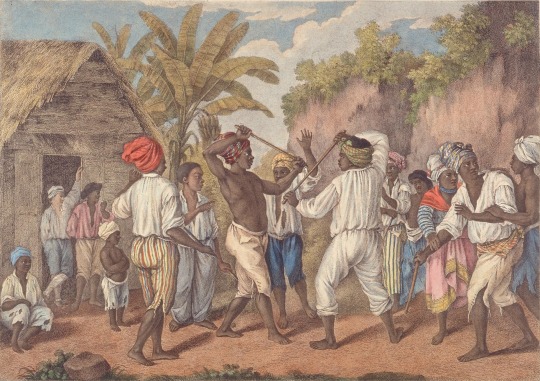
View On WordPress
#African Fighting style#African History#Afro-Cuban history#Cuba history#Juego de Maní#mani stick-fighting#stick-fighting martial art#war dance#West African
0 notes
Text
Somos Martí
This is a very personal project for me. When I started sketching, my intention was just to find an outlet, I never thought I would ever be showing my art to anyone. Much less in a gallery for an Art Walk in downtown Colorado Springs. Like what?!?
Somos Martí is about the beauty and the pain that I have witnessed being from Cuba. I grew up going to Cuba every year to see my family since I was born. Going to visit them 3-4 months out of the year, was not luxury vacation, I really lived what my family lived when I was there. My family is from a very poor part of the island. From boiling water so you can shower out of a bucket because there is no running water, to cutting newspaper for toilet paper on Sundays. I lived it all and I have such an appreciation and gratitude for my life and my experience. What an honor it has been to have seen what I have seen. To have lived what I have lived.
I hope that my art can express the spectrum of emotions that I feel for my country. The beauty of our traditions and the agony of our history. A unique story, different from those of our other Hispanic brothers and sisters. I am proud of my Cuban culture and I’m proud of my African roots. All Cubans want is the freedom of their country, to be able to speak without being persecuted by our own people. Democracy. Equality. Respect. Martí fought Spain for freedom not ever knowing that what came after would be far, far worse. Not communism, nor socialism as we are made to believe, but rather a dictatorship of oppression. Never ending oppression of our people by our people. We all want what Martí wanted. Somos Martí. “We are all Martí.”
I dedicate this exhibition to my family. I have learned so much from them, their resilience has inspired me and has made me who am today. They are all at the core of what I do and how I have lived me life. The good and the bad. I hope to make you proud.
To Cuba. I love you. Thank you. Forever.
1 note
·
View note
Text
History made by Democrats in the 2022 US Midterm Elections 💙
WES MOORE became the first Black governor of Maryland, as well as only the third Black governor elected in the country.

MAURA HEALEY became the first woman and the first openly gay person elected as the governor of Massachusetts, as well as the first openly lesbian governor in the US alongside TINA KOTEK (see in a later reblog to this post).

MAXWELL FROST became the first Gen Z and Afro-Cuban member of the US Congress after winning his race in Florida for the House of Representatives.
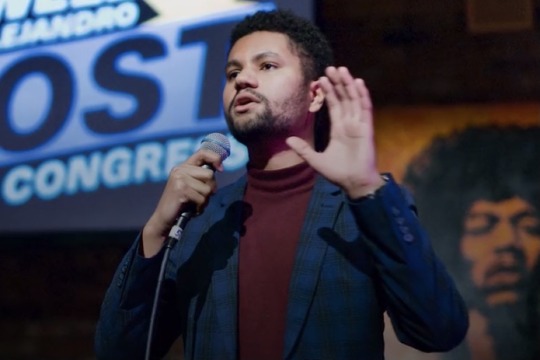
SUMMER LEE became the first Black Congresswoman from Pennsylvania after winning her race for the House of Representatives.

JAMES ROESENER became the first transgender man elected to a state legislature in US history in New Hampshire.
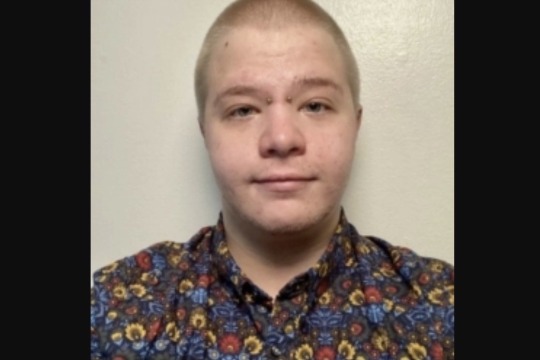
BECCA BALINT became the first woman ever elected to Congress from Vermont, as well as the first out LGBTQ person and openly gay person elected to Congress from Vermont.

ANDREA CAMPBELL became the first Black woman in Massachusetts to be elected Attorney General.

ARUNA MILLER became the first immigrant, first woman of color, and first Asian American elected to the Maryland lieutenant governor’s office.

ANTHONY BROWN became the first Black attorney general of Maryland.

ALEX PADILLA became the first Latino elected to the US Senate from California.

(Hit the image limit, so more will be coming in my next reblog ⬇️)
#politics#us politics#election 2022#midterm election#midterm elections#midterm election 2022#representation matters#history#vote#wes moore#maura healey#maxwell frost#summer lee#james roesener#andrea campbell#aruna miller#anthony brown#alex padilla#becca balint#100#500#1k#5k
9K notes
·
View notes
Text
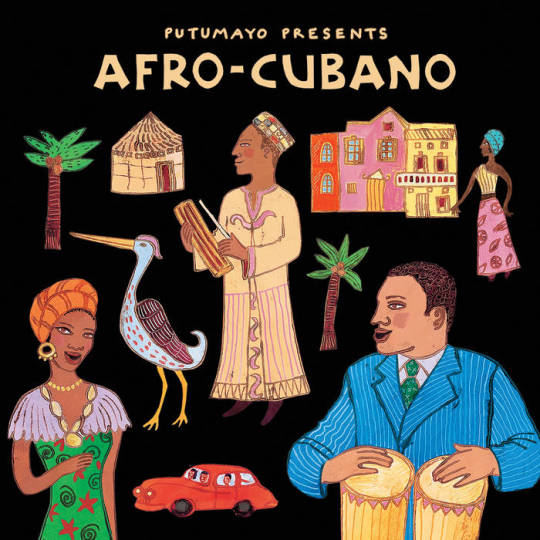
Music of African heritage in Cuba derives from the musical traditions of the many ethnic groups from different parts of West and Central Africa that were brought to Cuba as slaves between the 16th and 19th centuries. Members of some of these groups formed their own ethnic associations or cabildos, in which cultural traditions were conserved, including musical ones. Music of African heritage, along with considerable Iberian (Spanish) musical elements, forms the fulcrum of Cuban music.
Much of this music is associated with traditional African religion – Lucumi, Palo, and others – and preserves the languages formerly used in the African homelands. The music is passed on by oral tradition and is often performed in private gatherings difficult for outsiders to access. Lacking melodic instruments, the music instead features polyrhythmic percussion, voice (call-and-response), and dance. As with other musically renowned New World nations such as the United States, Brazil and Jamaica, Cuban music represents a profound African musical heritage.

Clearly, the origin of African groups in Cuba is due to the island's long history of slavery. Compared to the USA, slavery started in Cuba much earlier and continued for decades afterwards. Cuba was the last country in the Americas to abolish the importation of slaves, and the second last to free the slaves. In 1807 the British Parliament outlawed slavery, and from then on the British Navy acted to intercept Portuguese and Spanish slave ships. By 1860 the trade with Cuba was almost extinguished; the last slave ship to Cuba was in 1873. The abolition of slavery was announced by the Spanish Crown in 1880, and put into effect in 1886. Two years later, Brazil abolished slavery.
Although the exact number of slaves from each African culture will never be known, most came from one of these groups, which are listed in rough order of their cultural impact in Cuba:
The Congolese from the Congo Basin and SW Africa. Many ethnic groups were involved, all called Congos in Cuba. Their religion is called Palo. Probably the most numerous group, with a huge influence on Cuban music.
The Oyó or Yoruba from modern Nigeria, known in Cuba as Lucumí. Their religion is known as Regla de Ocha (roughly, 'the way of the spirits') and its syncretic version is known as Santería. Culturally of great significance.
The Kalabars from the Southeastern part of Nigeria and also in some part of Cameroon, whom were taken from the Bight of Biafra. These sub Igbo and Ijaw groups are known in Cuba as Carabali,and their religious organization as Abakuá. The street name for them in Cuba was Ñáñigos.
The Dahomey, from Benin. They were the Fon, known as Arará in Cuba. The Dahomeys were a powerful group who practised human sacrifice and slavery long before Europeans arrived, and allegedly even more so during the Atlantic slave trade.
Haiti immigrants to Cuba arrived at various times up to the present day. Leaving aside the French, who also came, the Africans from Haiti were a mixture of groups who usually spoke creolized French: and religion was known as vodú.
From part of modern Liberia and Côte d'Ivoire came the Gangá.
Senegambian people (Senegal, the Gambia), but including many brought from Sudan by the Arab slavers, were known by a catch-all word: Mandinga. The famous musical phrase Kikiribu Mandinga! refers to them.
Subsequent organization
The roots of most Afro-Cuban musical forms lie in the cabildos, self-organized social clubs for the African slaves, and separate cabildos for separate cultures. The cabildos were formed mainly from four groups: the Yoruba (the Lucumi in Cuba); the Congolese (Palo in Cuba); Dahomey (the Fon or Arará). Other cultures were undoubtedly present, more even than listed above, but in smaller numbers, and they did not leave such a distinctive presence.
Cabildos preserved African cultural traditions, even after the abolition of slavery in 1886. At the same time, African religions were transmitted from generation to generation throughout Cuba, Haiti, other islands and Brazil. These religions, which had a similar but not identical structure, were known as Lucumi or Regla de Ocha if they derived from the Yoruba, Palo from Central Africa, Vodú from Haiti, and so on. The term Santería was first introduced to account for the way African spirits were joined to Catholic saints, especially by people who were both baptized and initiated, and so were genuine members of both groups. Outsiders picked up the word and have tended to use it somewhat indiscriminately. It has become a kind of catch-all word, rather like salsa in music.
The ñáñigos in Cuba or Carabali in their secret Abakuá societies, were one of the most terrifying groups; even other blacks were afraid of them:
Girl, don't tell me about the ñáñigos! They were bad. The carabali was evil down to his guts. And the ñáñigos from back in the day when I was a chick, weren't like the ones today... they kept their secret, like in Africa.
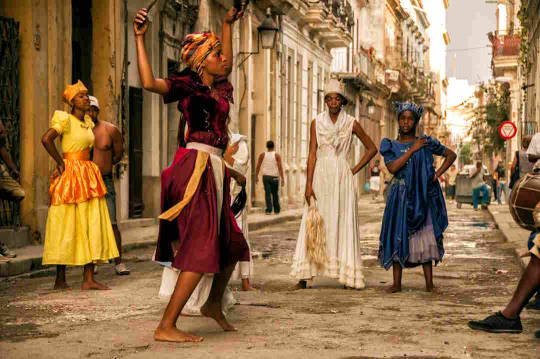
African sacred music in Cuba
All these African cultures had musical traditions, which survive erratically to the present day, not always in detail, but in the general style. The best preserved are the African polytheistic religions, where, in Cuba at least, the instruments, the language, the chants, the dances and their interpretations are quite well preserved. In few or no other American countries are the religious ceremonies conducted in the old language(s) of Africa, as they are at least in Lucumí ceremonies, though of course, back in Africa the language has moved on. What unifies all genuine forms of African music is the unity of polyrhythmic percussion, voice (call-and-response) and dance in well-defined social settings, and the absence of melodic instruments of an Arabic or European kind.
Not until after the Second World War do we find detailed printed descriptions or recordings of African sacred music in Cuba. Inside the cults, music, song, dance and ceremony were (and still are) learnt by heart by means of demonstration, including such ceremonial procedures conducted in an African language. The experiences were private to the initiated, until the work of the ethnologist Fernando Ortíz, who devoted a large part of his life to investigating the influence of African culture in Cuba. The first detailed transcription of percussion, song and chants are to be found in his great works.
There are now many recordings offering a selection of pieces in praise of, or prayers to, the orishas. Much of the ceremonial procedures are still hidden from the eyes of outsiders, though some descriptions in words exist.
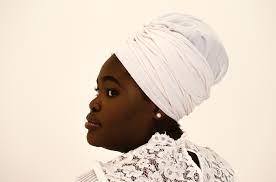
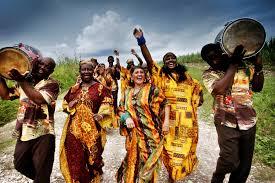
Yoruba and Congolese rituals
Main articles: Yoruba people, Lucumi religion, Kongo people, Palo (religion), and Batá
Religious traditions of African origin have survived in Cuba, and are the basis of ritual music, song and dance quite distinct from the secular music and dance. The religion of Yoruban origin is known as Lucumí or Regla de Ocha; the religion of Congolese origin is known as Palo, as in palos del monte.[11] There are also, in the Oriente region, forms of Haitian ritual together with its own instruments and music.
In Lucumi ceremonies, consecrated batá drums are played at ceremonies, and gourd ensembles called abwe. In the 1950s, a collection of Havana-area batá drummers called Santero helped bring Lucumí styles into mainstream Cuban music, while artists like Mezcla, with the lucumí singer Lázaro Ros, melded the style with other forms, including zouk.
The Congo cabildo uses yuka drums, as well as gallos (a form of song contest), makuta and mani dances. The latter is related to the Brazilian martial dance capoeira
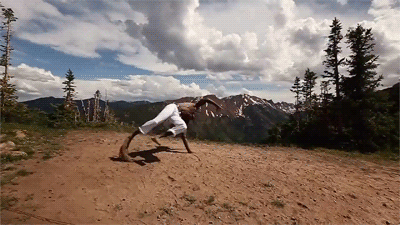
#african#afrakan#kemetic dreams#africans#brownskin#brown skin#afrakans#african culture#fitness#afrakan spirituality#afro cuban music#afro cuban#igbo#yoruba#congo#african music
123 notes
·
View notes
Photo


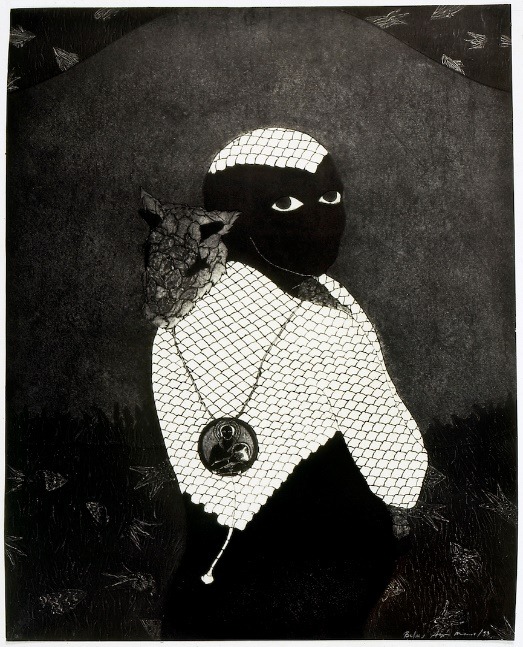

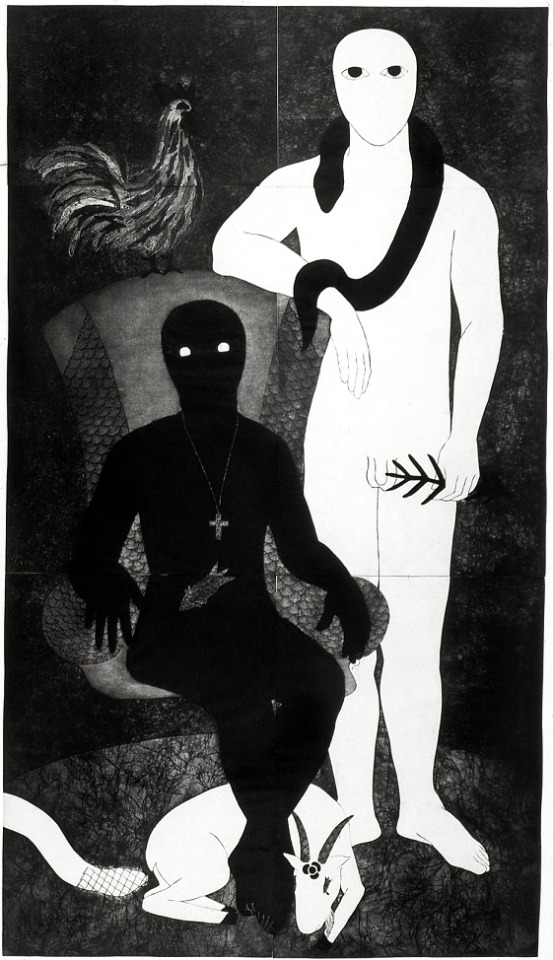
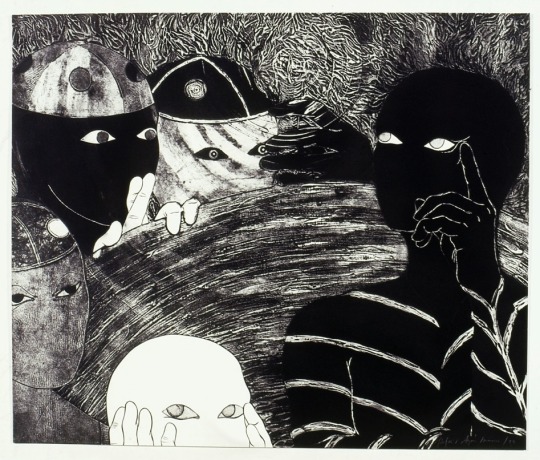

Belkis Ayón is another talented artist who died very early - at 32.
Belkis Ayón (1967 – 1999) was a Cuban printmaker who specialized in the technique of collography. Ayón is known for her large, highly-detailed allegorical collographs based on Abakuá, a secret, all-male Afro-Cuban society. Her work is often in black and white, consisting of ghost-white figures with oblong heads and empty, almond-shaped eyes, set against dark, patterned backgrounds.
A central theme of Ayón's art is Abakuá, a secret, exclusively male association with a complex mythology that informs their rites and traditions. The fraternal society began in Nigeria at Cross River and Akwa Ibom and was brought to Haiti and Cuba through the slave trade in the 19th century.
Ayón researched the history of Abakuá extensively, with special emphasis on the most prominent and only female figure in the religion, Princess Sikan. According to a central Abakuán myth, Sikan once accidentally captured Tanze, an enchanted fish which imparted great power to those who heard its voice. When she took the fish to her father, he warned her to remain silent and never speak of it again. She did divulge the information however, to her fiance, leader of an enemy tribe. Her punishment was a death sentence and with her, Tanze also died.
This story comes in the form of imposed silence in her work, a major theme. The concept of imposed silence is evident in the lack of mouths in all of her figures. Belkis Ayón demonstration of Sikan’s betrayal in her collographs may be considered a transgression because, ironically, Ayon, a female artist, gives voice to the main antagonist Sikan, a woman, in Abakua mythology, which traditionally prohibits women. In this way, Belkis rebelled against the sexist and patriarchal culture argued to be ingrained in Cuban society by highlighting the religion’s feminine presence.
To date, Ayón has been the only prominent artist to create an extensive body of work based on the Abakuán society. Because the society itself had created very few visual representations of its myths, Ayón had great freedom to visually interpret their myths for herself. Numerous Abakuán rituals are represented in her collographs, many of which draw on Christian as well as Afro-Cuban traditions. Abakuán beliefs existed in sharp contrast to the atheistic anti-religious position of the Cuban communist government at the time.
Ayón killed herself with a gunshot to the head at home in Havana on 11 September 1999. She was 32. Reasons for her suicide still remain a mystery to her friends and family. However,The New York Times obituary quotes her as saying of her art, in the year that she died:
"These [works] are the things I have inside that I toss out because there are burdens with which you cannot live or drag along, ...Perhaps that is what my work is about — that after so many years, I realize the disquiet."
https://en.wikipedia.org/wiki/Belkis_Ay%C3%B3n
https://rjm-resist.de/en/portfolio-item/belkis-ayon-manso-2/
444 notes
·
View notes
Note
Hello! I'm quite new here and is there an intro post of sorts for the Ros (Greenwarden)? I can't seem to find it anywhere 🥹
Not yet, no! I forgot I didn't have an intro post for Greenwarden as in depth as TKP or Erinys. Here's some info! (Art and more coming soon in its own dedicated post)
BAUTISTA | (Gender selectable. She/her or he/him)
Age: Early 30s
Ethnicity: Filipino-American
Height: 6'4"/193.04
Your partner in the field, maybe your only friend, and the person holding your leash. Bautista has spent the majority of their life in the U.S. Marine Corps, but was discharged a few years ago for reasons they have so far declined to share with you. They've also been your most stable and longest serving partner to date. Navigating your weird, intimate-yet-distant relationship is awkward at best.
NAZERI | (Gender selectable. She/her, he/him, they/them)
Age: Mid 30s
Ethnicity: Persian-American
Height: 5'11"/180
Your organization's best and brightest Hunter -- humans mutated with a particular serum to better serve PIRA as solo commandos. Technically your superior officer while they join your team in Warden. This is less than ideal, because they're kind of douchey. Smells like gifted kid syndrome.
DEVIN GRAVES | (They/them)
Age: Late 20s
Ethnicity: Afro-Cuban American
Height: 5'4"/162
The last member of the mysterious Graves family, which has lived in and run Warden, West Virginia for centuries. They spend more time owning and operating the town's only local cafe/brunch spot rather than playing mayor -- but there's more to them than meets the eye...
TRACE | (Gender selectable. She/her, he/him)
Age: Unknown. Looks early-mid 30s
Ethnicity: Anomaly. Can appear as anyone. Prefers to look like a scraggly White American
Height: 5'8"/172.72
An Anomaly you meet while in Warden. Technically, your job is to kill them, but they eventually prove to be helpful. Eventually. It takes awhile -- and they have some unpleasant history with Warden and its residents.
31 notes
·
View notes
Text
Unfortunately Cuba and the United States do share one aspect of present reality:
Wrapping up Cuban history with this note. There is also another grim parallel in that both the USA and Cuba see no small amount of difficulty on the part of Black people to speak to their reality, to their history, and to their experience. The Cuban government nominally professes to be communist revolutionaries but in practice it doesn't care any more than the USA does to hear narratives it doesn't want to admit are there.
0 notes
Photo



Oh, look, another blonde hair, blue eyed doll from AG. I watched the cute little stop-motion short film AG made for Courtney, and I have to admit, it was fucking cute and her charm won me over.
youtube
There’s *some* actual historical engagement with the popularization of video games. The biggest thing is that her mom is running for mayor of their fictional town in California (because of course Courtney has to be a Valley Girl) and faces a bunch of sexist BS on a TV interview. It covers the space shuttle era of space travel, Challenger disaster and the emotional impact that had on the United States.
In her second book, Courtney has a classmate with AIDS. I’m glad that was included, because putting AIDS and HIV-positive kids in schools was a huge fight in the 80s. Here in Tampa, the mother of Eliana Martinez, a disabled girl who had contracted HIV in a blood transfusion at birth, went to court to get her daughter into school, and a federal judge ruled she could go to school as long as she spent the day in a glass cage like an animal. It was that bad. Eventually, Eliana was able to attend school without the cage because her mother, Rosa, was amazing.
In spite of everything I like about Courtney’s story, let’s be real. AG’s 80s doll should have been Latina. A Cuban-American girl living in Miami, with at least one parent who’s an Operacíon Pedro Pan adoptee, and with relatives who came over during the Mariel Boatlift. And I’m not just saying that because my parents were living in Miami in the 80s, I’m saying it because Miami was an incredible place in the 80s.
Operacíon Pedro Pan was a program by the U.S. State Department and Catholic Church for Cuban children to be sent to America when parents feared they would lose their parental rights and their children would be sent to communist indoctrination camps. It was a chance for their kids to be raised as Catholic in free America instead of atheists under the brutal Castro regime. About 14,000 children were removed from Cuba to be mostly re-settled in Miami.
You may be familiar with the Mariel Boatlift if you’ve seen the opening scene of Scarface, which actually sums up the situation pretty well.
youtube
Now, granted, Mariel only happened between April and October of 1980. Even after the boatlift officially ended, people seeking to flee Cuba continued to come on boats. The “wet foot, dry foot” policy meant that anyone fleeing Cuba who managed to set foot on American soil was guaranteed asylum. However, they had to face the US coastguard trying to intercept them and turn them back on the water. Refugees from Haiti fleeing the Duvalier regime also flocked to Miami, but since Duvalier was right-wing, Haitians weren’t granted the same protections as Cubans were and it was absolute bullshit.
On top of all that, Miami also had thriving African-American, Afro-Caribbean, Colombian, Jewish, and gay communities. There was just SO MUCH incredible stuff going on in Miami in the 80s, and I mean, hello, Miami Vice was a whole aesthetic!

You could include all the stuff that’s going in in Courtney’s books and STILL pack in so much more amazing history. The overall vibe I get with Coutney’s collection is that even though there’s some good stuff in her stories, it’s more about selling 80s nostalgia than actually teaching 80s history, which is a travesty. I know it’d be hard to engage with 80s politics and Ronald Reagan without pissing off a *lot* of people, but you can still engage with some serious 80s history if you just look outside of the blonde hair, blue eye box.
155 notes
·
View notes
Text
Arturo Sandoval: A Virtuoso's Journey Through Jazz and Beyond
Introduction:
Arturo Sandoval, a name synonymous with virtuosity, innovation, and boundless musicality, stands as one of the most revered figures in contemporary jazz. Born seventy-four years ago today on November 6, 1949, in Artemisa, Cuba, Sandoval’s remarkable journey from a prodigious young talent in Cuba to a globally celebrated musician is a testament to his extraordinary skill, unwavering…

View On WordPress
#Afro-Cuban jazz#Arturo Sandoval#Dizzy Gillespie#For Love or Country: The Arturo Sandoval Story#Jazz History#Jazz Trumpeters#Latin Jazz
2 notes
·
View notes
Text
While sugarcane has defined Caribbean islands since the onset of European settler colonization, a little-known African species, guinea grass, has invaded sugar plantations from within. Cultivated to intensify sugar production, guinea grass ironically became a weed of the plantations while providing material and spiritual resources to enslaved and marooned Africans and their descendants. [...]
While sugarcane was imported from Austronesia, guinea grass hails from the western coast of Africa. Sugar was the principal crop of many Caribbean plantations; guinea grass was imported as fodder for the oxen that labored in the fields and for the cattle that fed the planters. [...]. A 1707 account by Hans Sloane, whose collections would form the core of the British Museum, describes the grass (then known as “Scotch grass”) as widespread in Barbados and Jamaica [...].
The imported grass was celebrated by eighteenth- and nineteenth-century planters for its high grazing quality. Bryan Edwards sang its praises in Jamaica, writing that it may be considered as next to the sugar-cane, in point of importance; as most of the grazing and breeding farms or pens throughout the island were originally created, and are still supported, chiefly by means of this invaluable herbage. For Edwards, guinea grass had an almost equal status to sugar cane because it could feed “the plenty of horned cattle both for the butcher and planter.” [...] By 1786, the African grass had become naturalized in Guadeloupe, and, by 1813, it had reached Mississippi, writes Parsons. It spread widely throughout Central and South America [...].
Indeed, one observer in New Granada (modern-day Colombia) was so enthusiastic as to argue that whoever had introduced the plant deserved a statue “as high as New York’s Statue of Liberty” [...].
In Cuba, the grass appears in an 1816 report of José Antonio de la Ossa, the first director of the Botanical Garden of Havana, who wrote: “It is an abundant and convenient pasture grass, because it multiplies its stalks in the same way as Sugar cane[.]”
Like Sloane and Edwards, Ossa compares guinea grass to sugarcane. The two foreign grasses seemed to them similar in morphology and function, because they both [...] promoted the economic development of the islands’ cash crop societies. [...] While sugar was introduced to Cuba long before guinea grass, it was guinea grass that allowed for the intensification of Cuban sugar cultivation with large herds of oxen.
---
Yet something strange happened in the history of this ostensibly symbiotic relationship.
Although guinea grass was meant to support the sugar economy by feeding its beasts of burden, ironically, it became a virulent weed to the sugarcane plants. By 1977, guinea grass was rated the number one weed to sugarcane in Cuba. In 2012, the journal of the National Botanical Garden of Cuba (Revista del Jardín Botánico Nacional) listed it as [...] an invasive species of greatest concern. In this way, the two imported grasses became stalky antagonists in the daily competition for light, water, and soil nutrients.
Their cultural meanings, however, had long since diverged. If sugarcane supported the economic interests of European planters, guinea grass was appropriated by enslaved and marooned Africans across the Caribbean for practical and religious purposes.
Diasporic Africans in the Virgin Islands used the dried grass to make masquerade costumes for Carnival and other festivals. In Cuba, priests used it to make omiero, [...] of the Afro-Cuban Reglá de Ochá religion.
Moreover, some of the enslaved canecutters used an ancestral West African technique to thatch their mud huts with guinea grass. [...] In fact, the famed maroon Esteban Montejo described using this method of thatching during his escape from a Cuban sugar plantation in the late nineteenth century: [...] I had never left the plantation before. I walked uphill, downhill, in every direction. [...] My feet were blistered and my hands were swollen and festering. I camped under a tree. I made myself a shelter of guinea grass in a few hours and I stayed there four or five days. [...]
Guinea grass has continued to take on new meanings for Caribbean writers in the twentieth and twenty-first centuries. In Alejandro Aguilar’s 1997 short story “Landscape of Clay,” [...] [t]he untamed grass, like the cadets’ expressions of sexuality, subverts the rigid structure of the institution. Likewise, the storyteller in the 2002 play In the Time of the Revolution by the Guadeloupean writer Maryse Condé bemoans the fact that “people’s dreams are not made to grow freely like guinea grass on the banks and highways. Some people try to pull them up, to mow them down, to dry them out, to burn them and see them go up in smoke.” [...] In undermining the economic ambitions of the plantation system, guinea grass has come to represent acts of subversion [...].
---
All text above by: Hannah Rachel Cole. “Plant of the Month: Guinea Grass.” JSTOR Daily. 1 December 2022. [Bold emphasis and some paragraph breaks/contractions added by me.]
80 notes
·
View notes
Text
Hetalia Headcanons - Cuba 🇨🇺🏝️🌺
his full human name is carlos ángel machado ruiz, or shortened to carlos machado. i don't have a set physical age for him but maybe around 30?
he's a marxist-leninist. very intelligent, intellectual but unpretentious, and politically active. he's an academic, probably has degrees in political science and/or economics. i could see him being a medical doctor as well, as cuba is renowned for its advanced healthcare.
he's friendly and generous with a laid back personality, loyal to his loved ones and passionate about social/environmental causes. he can be impatient, and does have a temper but it's hard to provoke and reserved for rude and ignorant people. very much a beliver of respect being a two way street.
his canon bday is may 20th and i honestly love that for him. classic stubborn taurus with a touch of unbothered gemini swag.
he's an ambivert, he throws a great party and likes to socialize but also keeps his circle small and needs a lot of alone time. i think he'd be old friends with russia, though they're not as close as they once were and ivan can get on his nerves. he understandably has beef with america, but is slowly becoming more civil with alfred.
he loves to read, particularly history and political theory. some other hobbies are swimming, fishing, playing the tres (a type of guitar) or afro-cuban percussion e.g. tumbadora (aka conga) and bongós.
his sense of humor is dry with a goofy side that comes out around people he's closer with. he has a quick wit and is always telling dad jokes. also very much a softie for kids, animals and nature.
i headcanon him as gay/demisexual, cucan is an essential ship for me personally so they're a package deal. he is so gentle with mattie, so giving and protective. they treasure each other selflessly and understand one another better than anyone.
he loves to eat and cook, especially loves when matthew cooks for him or they cook together. his favorite dish is black beans and rice with tostones. he also loves strawberry ice cream and tropical fruits.
he's afro-latino + mixed race, with yoruba (west african) taino (indigenous carribbean islander) and spanish ancestry. his skin tone would be a medium warm brown, maybe a 5 on the fitzpatrick scale. once again the canon design is kinda colorist.
he has a distinct accent and is mutlilingual, and speaks quite a bit of quebecois thanks to matthew.
his body type is buff and chubby, he's wicked strong and built like a tank but doesn't have that much definition bc the chub is hiding it. dad bod.... chest hair and moobs. he's about 6 feet tall. he has long dreadlocks that he's been maintaining since he was young.
i could see him being a lapsed catholic/culturally catholic but personally atheist. he's much more material than spiritual in terms of philosophy.
he smells like coconut, cinnamon and cigars (in a pleasant way)
he mostly dresses casually (hawaiian shirts and cargo shorts lol) if hes just chilling at home he's probably shirtless. earth tones suit him well, so do orange, yellow, pink, and jewel tones. bonus; he wears a gold chain and sometimes rings.
he partakes in alcohol occasionally, when he does he loves rum and fruit-based cocktails. sipping a lil drink on the beach is one of his favorite ways to relax and he deserves it. he does smoke weed recreationally but honestly i think matthew is way more of a stoner.
41 notes
·
View notes
Text

A sneak peek at my 3D wall installation for the First Walk during Hispanic Heritage Month. Come check it out October 7th.
#hispanos#hispanic heritage month#history#cubana#cubano#afro cuban#for the love of art#cubalibre#soscuba
0 notes
Note
I tried finding out the most common eye color in Cuba but there seems to be no data on that :(
But I did find out that they are in 9th place for dick size
that’s. hilarious. big dick lance rights. but also i can just tell you that the most common eye colour in cuba is brown bc the most common eye colour ANYWHERE is brown, because brown eyes are the dominant gene. also, i was reading up about cuban history (considering writing a period piece) and unless i read the wikipedia article wrong, 65% of cubans are afro-cubans or have african decent, and of course more melanin means darker eyes. the chances of lance having light eyes is LOW, and even though he’s mixed, it’s still really unlikely that he’d have blue eyes, especially bc his skin and hair are both dark. he has a lot of melanin. his eyes should be dark. the reason they’re not in canon is, whether you like this or not, because animated characters of colour are FREQUENTLY designed with as many ‘white’ features as possible. i mean they will have euro-centric features such as small noses, thin lips, straight/wavy hair, light eyes. this happened in atla, it happened in the owl house, and holy shit did it ever happen in voltron. this is a pattern and i’m dog shit tired of it. people of colour deserve to not only see themselves in shows and media but they deserve to see themselves as beautiful and talented and capable and not second best! brown eyed people have the most gorgeous and breathtaking eyes in all humanity and i refuse to bend to the messaging telling me otherwise!!
#i know that i’m taking this ‘too seriously’ but idc idc idc.#yes it’s a dumbass tv show yes it has real world implications.#blue eyed lance is fine#sure#but WHY does he have to have blue eyes?#why are light eyes the beauty?#the default?#it’s not even accurate!!!#why does the ‘common’ eye colour have to be the non beautiful one????????#racism#ask#lance mcclain#brown eyed lance
51 notes
·
View notes